The Snapdragon 8 Gen 1 Performance Preview: Sizing Up Cortex-X2
by Dr. Ian Cutress on December 14, 2021 8:00 AM ESTSystem-Wide Testing and Gaming
For our system wide tests, we had time to go through Geekbench 5, PCMark, and GFXBench. For workload based testing, we see performance uplifts with the S8g1, and it is a noting that here we tested PCMark with both performance mode on and off, which gave a +10% increase in the score – we’ve seen this before running PCMark on both Arm and x86 devices where turbo and favored cores can have large effects on scores. By contrast, GB5 scored the same.
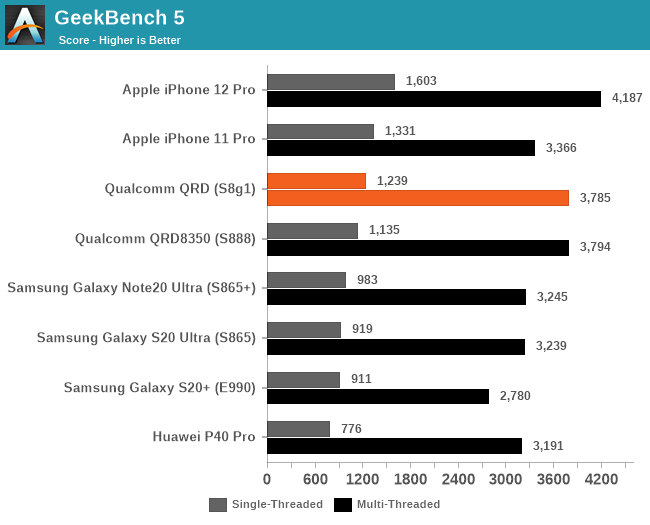

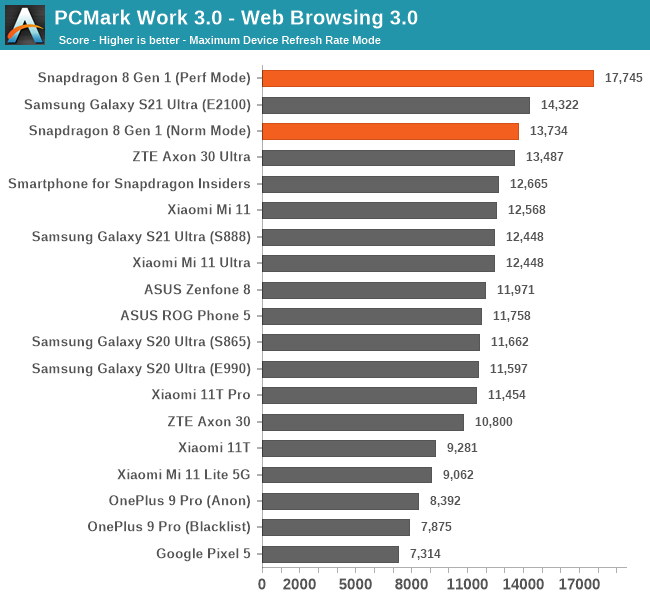
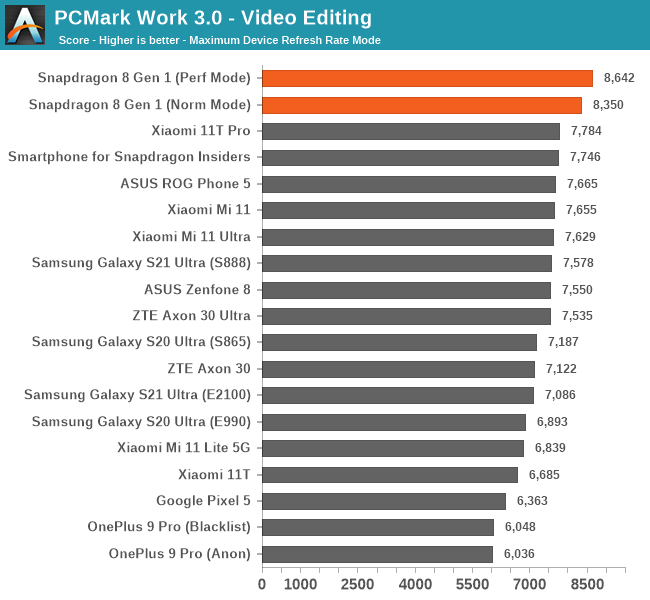
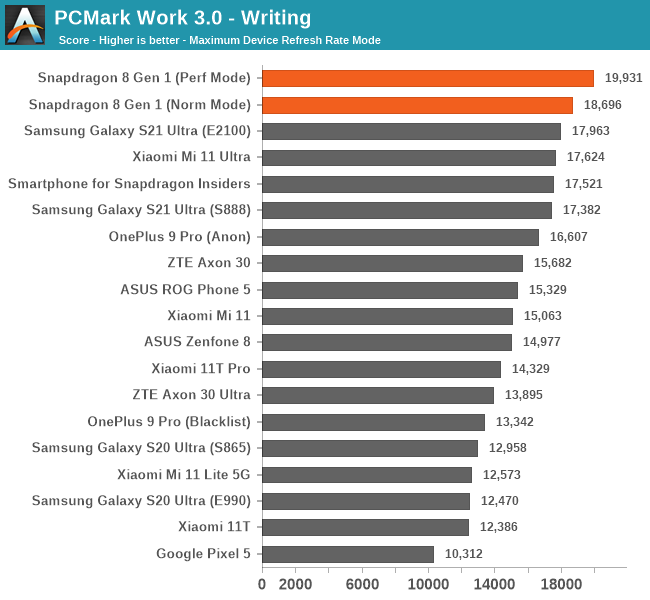
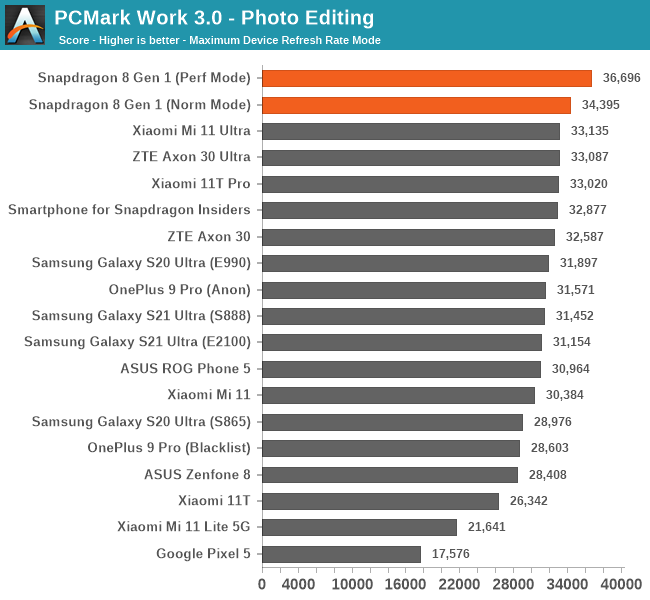
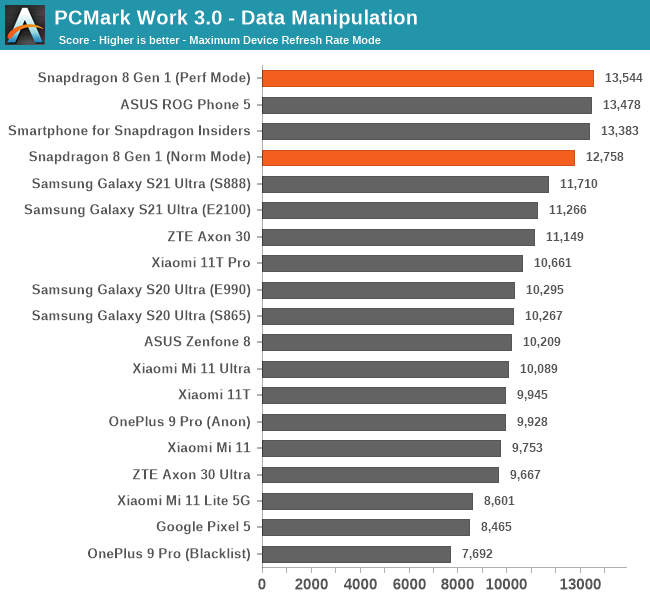
In our PCMark tests, it's clear who the new ruler of the roost is.



On the graphics side, Qualcomm’s new number-less Adreno that is advertised as being ‘new from the ground up (but we won’t tell you how)’ again offers generational improvements for next year’s Android flagships. Qualcomm historically also offers better graphics performance per watt, so we’ll have to wait until we get the devices on hand to showcase that data. But overall, the gains in these tests show a large +50% performance jump over previous generation S888 graphics performance. In 2022, we'll have MediaTek’s flagship trying to aim for the same market but based on the Mali GPU, and graphics is an area that Qualcomm historically outpaces Mali designs quite easily. The only serious competitor in this space is Apple.










169 Comments
View All Comments
eastcoast_pete - Tuesday, December 14, 2021 - link
I guess that's one "impressive" benchmark score, just not the one any user would hope for. Less than 10% complete after half an hour is pretty abysmal. Doesn't bode well for ARM's supposedly much improved LITTLE core designs. Just for comparison, how did the last A55 cores perform in that test?dudedud - Wednesday, December 15, 2021 - link
Andrei said something along the lines of 14hrs for both int and fp SPEC 06.Wilco1 - Thursday, December 16, 2021 - link
Remember the little cores are much slower than the big cores since they have very little cache and run at a low frequency. In SD888 the little cores are 6.4 times slower than the big core. That should be reduced to about 5 times in 8gen1.I think having 4 little cores is too much, they don't contribute to benchmark scores, so you could have just 1 or 2 for background tasks and use the area to quadruple the tiny L2.
iphonebestgamephone - Thursday, December 16, 2021 - link
They do contribute to benchmark scores, 4 of them can be helpful when you need to load up all 4 big cores for the foreground and theres still some background tasks going on.Wilco1 - Saturday, December 18, 2021 - link
That does not make sense. The little cores have almost no L2 cache so will be competing with (and slowing down) the big cores due to the small L3. Having fewer little cores with a much larger L2 means more L3 is available per core, improving performance when all cores are loaded.A little core is most useful for background tasks when the screen is off and mid/big cores are powered down. If you have more background tasks than a single little core could handle, then it's not really "background", and it would be better to run them on a mid core since that will be several times more efficient than 4 little cores (see the efficiency graph, the mid core in eg. SD888 has about the same efficiency as a maxed out little core).
iphonebestgamephone - Sunday, December 19, 2021 - link
When all 3 mid cores and the prime core are fully loaded in apps that use 4 threads, the little cores are doing all the background tasks. How much l3 do background tasks need anyway?syxbit - Tuesday, December 14, 2021 - link
>>There is no AV1 decode engine in this chip, with Qualcomm’s VPs stating that the timing for their IP block did not synchronize with this chip.This is very disappointing. The Radeon 6800, which launched over a year ago has hardware AV1 decode. I imagine the 2021 Exynos and Tensor chips will all do AV1
TheinsanegamerN - Tuesday, December 14, 2021 - link
AV1 wont be necessary for a decade at least. AV1 only hit stable 1.0 spec in 2019, this chip was likely already in the design phase beforehand.movax2 - Wednesday, December 15, 2021 - link
YouTube and Netflix already uses AV1 for a good portion of their videos. Your statement is wrong.GC2:CS - Tuesday, December 14, 2021 - link
The GPU upgrade seems absolutelly massive.I have not seen 50% gain in years if i remember corectly.